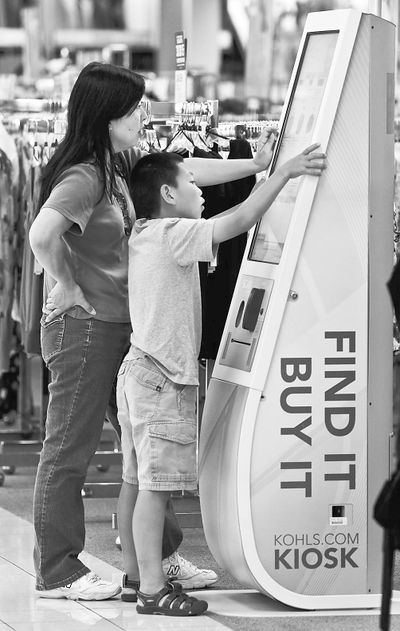Retailers, patrons embrace e-commerce
Brick-and-mortar stores rethink their online strategies

LOS ANGELES – When shoppers at JCPenney stores can’t find what they want, sales clerks are steering them to the Internet – not at their home computers, but at new online kiosks right inside the stores.
Action sports retailer Zumiez Inc. has opened more than 200 stores over the past four years. But this year, it has scaled back its openings to focus on building its e-commerce sales.
Even Macy’s Inc. is doubling down on its dot-com. The company whose name is almost synonymous with “department store” has seen its online sales rocket more than 50 percent in the last two years. It recently junked its standard cash registers for 50,000 high-tech ones that can check online for items that are out of stock in the store and place orders directly for customers.
Traditional brick-and-mortar retailers once outsourced their online sales to specialty “fulfillment” companies. Today they are running their own online operations – and increasingly challenging their executive brainpower to find more sophisticated ways to compete with online-only retailers such as Amazon.com.
“When you look at the big retailers, they clearly have not grown online at the same rate as Amazon has,” said Marshal Cohen, chief industry analyst at market research firm NPD Group. “The online business has been the redheaded stepchild. That’s starting to change.”
To be sure, online revenue still accounts for a small percentage of total retail sales. Although online sales totaled $134 billion last year, the National Retail Federation estimates that’s only about 7 percent of all retail sales.
But growth has been rapid, with online sales soaring nearly 400 percent since 2000.
Macy’s, for example, said online sales last year topped $1 billion for the first time, accounting for about 4.3 percent of total revenue. That’s up from about 3.3 percent in 2008.
Analysts say economics is driving the trend. It costs less to process online orders than to lease retail space and field an army of sales clerks. There are almost no limits on inventory, and bulky items such as luggage can be shipped from a warehouse instead of taking up precious floor space.
Time-starved consumers also are finding it more convenient to browse items online instead of driving to the mall, where they may or may not find the right size shoe or the exact color bed sheets they want.
Retail executives are spending much of their brainpower on the challenge of boosting online sales. To better compete with Amazon, for example, book giant Barnes & Noble Inc. shook up its top management this year, replacing its chief executive with the head of its online division.
And besides offering more discounts and deals such as free shipping, they also are moving into more sophisticated models of online selling. Those include combining e-commerce and store divisions and expanding online selections and services.
“It’s gotten to the point where you can’t think about online retail the way retailers have thought about it in the past,” said Kasey Lobaugh, a principal at Deloitte Consulting who advises major retailers on developing their online channels.
Lobaugh said his advice centers on making the buying process faster. He recommends systems that recognize customers and feature fewer clicks, such as a single-page checkout.
“It’s actually a massive undertaking for most retailers because they’ve built up their organizations with separate operations for the stores and for e-commerce,” he said. “All of that has to be redone and recast.”